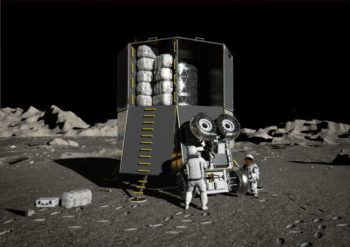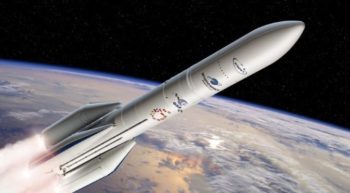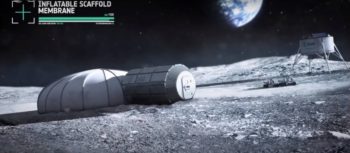Europe is pressing ahead with the European Large Logistics Lander (EL3) to deliver scientific or logistic payloads to locations on the Moon’s surface.
The EL3 lunar lander is being blueprinted by the European Space Agency (ESA) and viewed as a key capability to provide European access to the Moon’s surface.
An ESA call for ideas is underway targeted to the science, research and technology communities and other potential users from other sectors.
The call for ideas aims to gather inputs on how Europe can use this capability to deliver world class science at the Moon and prepare and deliver capabilities for future human and robotic space flights.
Submitted ideas will be reviewed and the best ones taken forward into mission studies from the end of 2020, with their originators engaged in the mission definition.
Ariane boost
As projected, the lander would be launched on an Ariane 64 launch vehicle delivering cargo in support of human explorers or deliver self-standing robotic missions for science, technology or other applications.
EL3 flights would begin in the late 2020s, with a cadence of missions over the following decade and more.
It is intended that a decision on the full development to flight of the EL3 Moon lander and its first mission will be requested at the ESA Council at ministerial level in 2022.
Sample return missions
Earlier, the ESA Human and Robotic Exploration Team detailed the Heracles European Large Logistic Lander to enable a series of proposed ESA missions to the Moon that could be configured for different operations such as cargo delivery, returning samples from the Moon or prospecting resources found on the Moon.
The sample return mission based on the Heracles European Large Logistic Lander was seen as enabling an international program to use the Moon-circling Gateway to the fullest and enable scientists on Earth to select and return samples of their choice using artificial intelligence technology that is more capable than on previous missions.
Future commercialization
The Heracles European Large Logistic Lander, for example, could bring a sample return package to a previously unexplored region near the lunar South Pole as an interesting area for researchers.
Other goals of the missions included testing new hardware, demonstrating technology and gaining experience in operations while strengthening international partnerships in exploration.
Development of the Heracles European Large Logistic Lander would provide an Ariane 64-based lunar cargo lander available for potential future commercialization by European industry.





